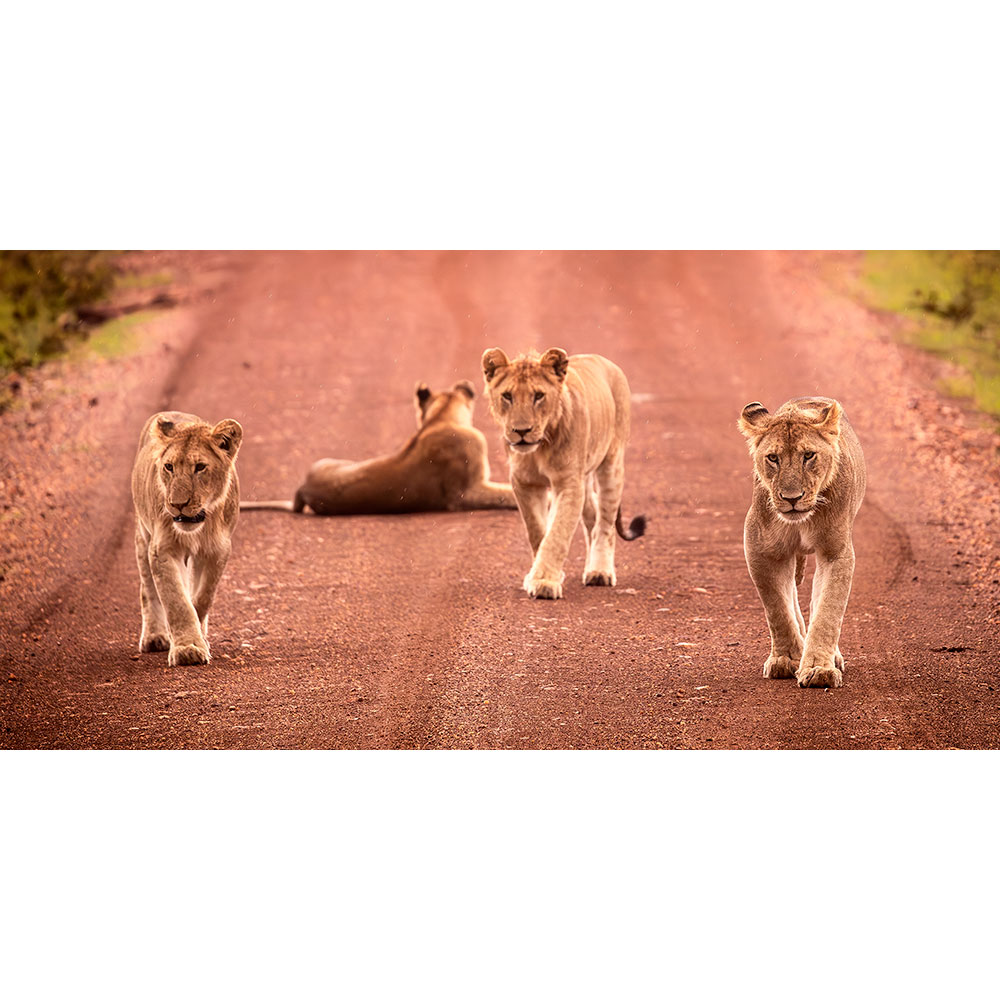Every effort on this Gallery site has been made to accurately represent the vibrant colours of Sam’s images. Due to differences in computer screens and certain other variations, the images here should only to be taken as a guide. Obviously, the colour and sharpness of a finished print are far superior to what can be presented on a small screen.
Leaving the Cub behind
$200.00 – $2,800.00
What a night this was, a miserable weather evening we suddenly came upon a pride of 11 lions who were happy to just walk beside our car till they spotted Topis and Giselle’s. The Cub in the background wasn’t keen so the others immediately went into hunting mode. When the lions turned and looked at the Cub he got up and caught up with them.Watching the interplay between all the animals was so fascinating. Very hard to also know when to watch and put the camera down.
Maasai Mara, also sometimes spelled Masai Mara and locally known simply as The Mara, is a large national game reserve in Narok, Kenya, contiguous with the Serengeti National Park in Tanzania. It is named in honour of the Maasai people, the ancestral inhabitants of the area, who migrated to the area from the Nile Basin. Their description of the area when looked at from afar: “Mara” means “spotted” in the local Maasai language, due to the many short bushy trees which dot the landscape. Maasai Mara is one of the wildlife conservation and wilderness areas in Africa, with its populations of lion, leopard, cheetah and African bush elephant. It also hosts the Great Migration, which secured it as one of the Seven Natural Wonders of Africa, and as one of the ten Wonders of the World. The Greater Mara ecosystem encompasses areas known as the Maasai Mara National Reserve, the Mara Triangle, and several Maasai Conservancies, including Koiyaki, Lemek, Ol Chorro Oirowua, Mara North, Olkinyei, Siana, Maji Moto, Naikara, Ol Derkesi, Kerinkani, Oloirien, and Kimintet.

